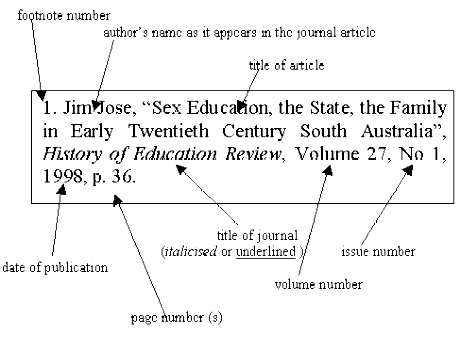sample from HTML program and PDF book
1. When you offer quotations from other people’s work in an essay, the sources of the information may sometimes be given in footnotes printed at the bottom of the page. In modern word-processors footnotes can be added automatically. However, you should use this facility with care and restraint.
2. A bracketed number should be placed, as A.B. Smith suggests, ‘normally at the end of the sentence in which the reference is made’, and successive references are then given the next higher number. (1)
3. The number may be placed after a specific word if necessary, or at a break in the sense of the sentence.
4. Sometimes the footnote may be used to add an aside or to offer a comment on something which is only obliquely related to the topic in question. (2)
5. If a direct quotation is being used, the reference in the footnote should allow a reader to trace the source of the information if necessary. That is, you should give details of author, title, publisher, and date of publication, then page number. (If you are using the Harvard system of notation, remember that the date follows the author’s name.)
6. Successive quotations from the same source may be indicated by using the op. cit. and ibid. system of abbreviations. Alternatively, use the short-title system.
7. This system of footnoting can become extremely complicated and difficult to use – particularly if you wish to make changes. The addition of one new quotation in the middle of the essay can throw the whole system out of order. [If you are writing or typing it is difficult to know how much room to allow for the footnotes, and once the page is full you cannot add more.]

8. There are other reasonable arguments against using footnotes. The most important is that by their very nature they interrupt the flow of your argument. It is very difficult for a reader to resist the inducement to glance to the bottom of the page – no matter how lightweight the remarks which are placed there.
9. The easiest solution to these problems is to present this information as endnotes. These are given on a separate sheet at the end of your essay. This system is much easier to use, and additions or corrections can be more easily made when producing the final draft.
10. The general tendency in academic writing has recently been to offer endnotes rather than footnotes. This is because the printing of footnotes in academic publications is very costly. However, the automatic footnoting facility on modern word-processors might reverse this trend.
Footnotes
1. A.B. Smith, How to Use Footnotes Correctly, Manchester: Imaginary Press, 1999, p.368.
2. This system can easily become very unwieldy, even though it is obviously convenient for the reader. If the notes are no more than bibliographical information on your sources, the effect will be slightly irritating.
© Roy Johnson 2003
Buy Writing Essays — eBook in PDF format
Buy Writing Essays 3.0 — eBook in HTML format
More on writing essays
More on How-To
More on writing skills